Un catalogo ragionato --. Statuary and musical representations of Greco-Roman
characters. Statue romane antiche -- nudi maschili -- ROMA, tondo, grandezza,
naturale -- with references to representations in open-air statuary, life-size.
The adjective "Roman" has to be understood 'broadly' and not necessarily related
to the _city_ of Rome, since some of these ancient statues were excavated
elsewhere.
ACHILLE:

STATUARIA: It is difficult to trace the oldest statue of "Achille" as found in Italy.
MUSICA: 1663. G. Legrenzi, "L'Achille in Sciro"
-- favola drammatica da rappresentarsi in musica
nel Teatro a S. Stefano in Ferrara, su libretto di Ippolito Bentivoglio,
dedicato All'eminentissimo, e Reverendissimo Pr. il Signor Cardinale
Fransoni. 1664 Venedig, Teatro San Salvatore, 1673 Bologna,
Teatro Formagliari. Thetis, Meeresgöttin - Alt
Achille, ihr Sohn (Tenore) Cheiron, sein Erzieher - Baß,
Lycomedes, König von Skyros - Baß, Deidamia, seine Tochter -
Sopran, Theagenes, ihr Verlobter - Tenor, Odysseus, König von
Ithaka - Baß, Dienerschaft, Sklaven, Krieger, Volk.
Insel Skyros vor
dem Trojanischen Krieg, Mythologie. -- Antonio Draghi
(Ferrarese), Achille in Sciro. su libretto du Cav. Ximenez. Achille
riconosciuto, Achille in Tessalia.
ACI: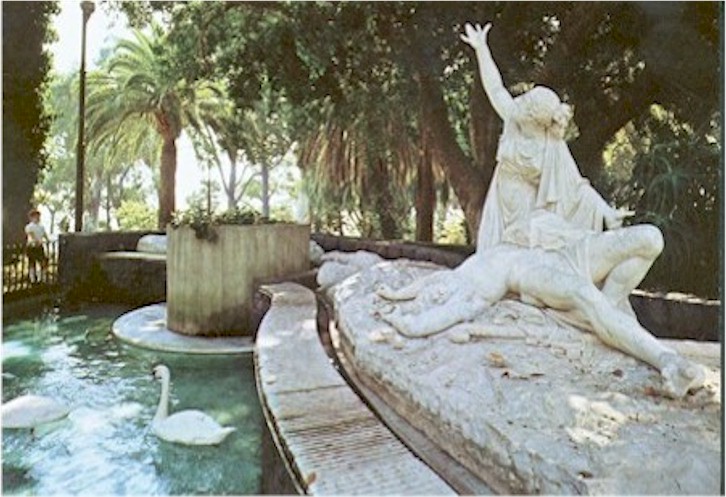
STATUARY. The representation of "ACI" in open-air statuary in
Italy is pretty common. This above from a fountain.
1686. Giovanni Battista Lulli, Aci e Galatea.
ADMETO:
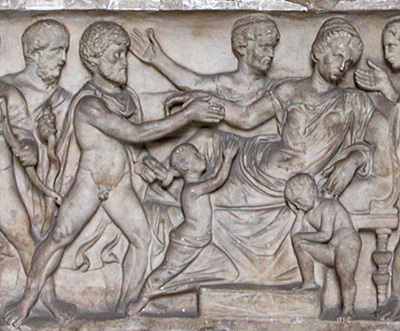
STATUARY. The representation of "ADMETO" in open-air
statuary in Italy is not so common. This from a relief.
1647. Gian Battista Lulli, Alceste
ADONE:
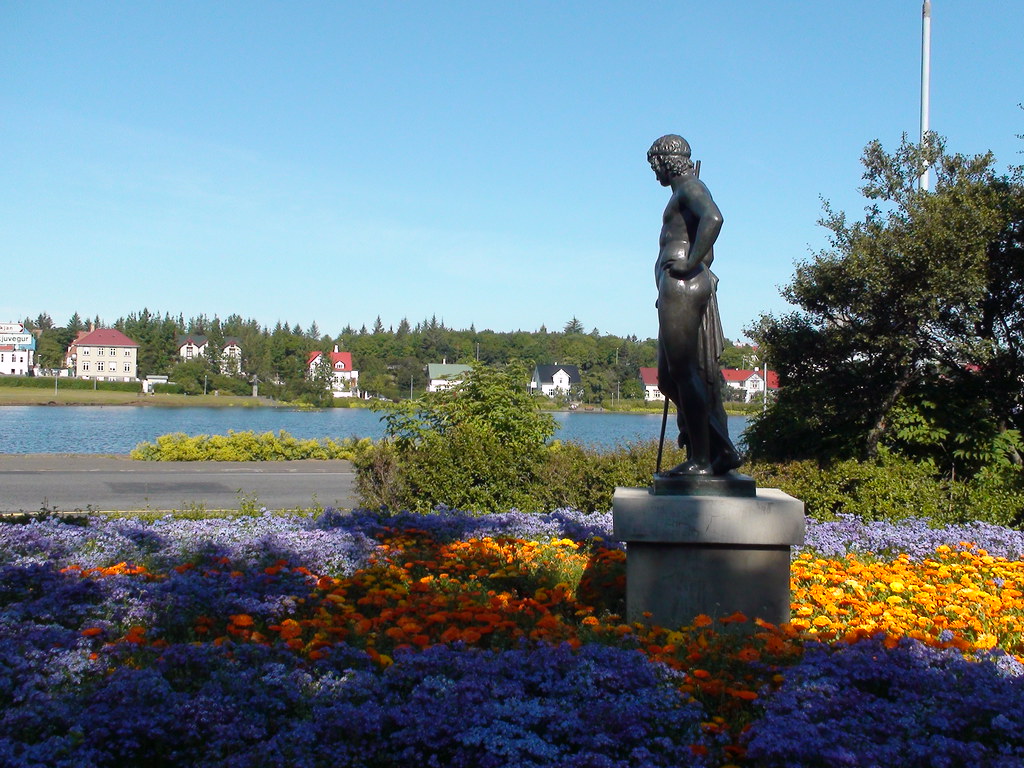
STATUARY. The representation of "Adone" in open-air statuary in Italy
should be easy enough to trace.
1626. Domenico Mazzocchi, La catena d'Adone.
-- prologo e cinque atti, su libretto di Ottavio Tronsarelli, tratto dell'"Adone" di Giambattista Marino, Palazzo Conti, Roma, 12 feb.
-- prologo e cinque atti, su libretto di Ottavio Tronsarelli, tratto dell'"Adone" di Giambattista Marino, Palazzo Conti, Roma, 12 feb.
AGAMENNONE:

Fig. The earliest representation of "Agammenone" in Italian statuary should be easy to trace.--
1661. J. J. Loewe, Ifigenia
AIACE:

STATUARY: The representatiaon of "AIACE" in Italian statuary should be common enough. We agree that the TORSO DEL BELVEDERE is indeed Aiace's.
1697. Sabaldini, L'Aiace:
-- dramma per musica, su libretto di Pietro d'Averara, Roma; revisione dell'omonima opera di Carlo Ambrogio Lonati, Paolo Magni e Francesco Ballarotti.
AMORE:
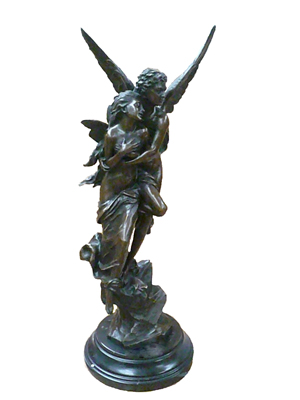
STATUARY: The representation of "AMORE" in open-air Italian statuary should be enough of a cliche.
-- greco Eros -- dio dell'erotismo e della bellezza. Sought by Psiche, the personification of the human soul and representation of Immortality. She loses him through her own curiosity. Eventually Psiche is restored to Amore and made immortal.
1634. Marco Scacchi. Le nozze d'Amore e Psiche
-- dramma in musica, su libretto di Pucitelli.
ANTINOO.
We have a few representatives here.
ANTINOO (a) ♂, nudo, Belvedere, Vaticano. The attribution of this to "ANTINOO" has been disputed. Haskell/Penny list other attributions (or misattributions) --
ANTINOO ♂,nudo, Campidoglio. Again, other misattributions are listed by Haskell/Penny.
APOLLINO ♂, nudo, Tribuna, Uffizi -- vide: APOLLO.
APOLLO:
Statuary: The most popular representation was of course
the "APOLLO DEL BELVEDERE".
1597. J. Peri, L'incoronazione d'Apollo per Dafne
cangiuta in lauro
-- Palazzo Corsi, Firenze. Peri played the role of Apollo. J. Corsi, "La Dafne", Firenze
APOLLO -- is perhaps the most represented type. Of course, the irony was
often mentioned that any nude statue was ascribed to "Apollo". Below some of the
most famous representatives. -- Palazzo Corsi, Firenze. Peri played the role of Apollo. J. Corsi, "La Dafne", Firenze
APOLLO ♂ pizio, nudo, Belvedere, Vaticano. Bow and arrow missing. Supposed to represent Apollo just before shooting the "Pittone".
APOLLO ♂ saurottono, nudo oggi: Louvre. The iconography very complex.
APOLLO -- moderne. BERNINI: "Apollo e Dafni" (Villa Borghese).
ARCA, GIOVE:

Fig. The representation in open-air statuary should be easy to trace (or not).
-- figlio di Calisto, an Arcadian nymph who was changed into a bear by Jupiter, as was her son, Arca. Jupiter then turned them into constellations which are known as the Great Bear and Little Bear.
1651. F. Cavalli, La Calisto.
ARISTIDE ♂, Napoli.
ARROTINO ♂, Tribuna, Firenze.
ASCANIO:

STATUARY: The representation in open-air statuary should be easy to trace. A very popular one being Bernini's statue in Villa Borghese, Roma -- not open-air, though.
1771. Mozart, Ascanio in Albalonga
-- su libretto di Giuseppe Parini. Teatro regio, Milano.
AUGUSTO ♂ o Germanico nudo, il giocatore di morra, oggi: Louvre.
BACCO:
STATUARY. The earliest representations listed by Haskell/Petty, "Taste and the antique". The representation of BACCO in open-air statuary is common enough. Michelangelo's famous statue in the Roman villa being the most popular one.
1608. Claudio Monteverdi, "L'Arianna abbandonata da Teseo e trovata da Bacco". Mantova
-- Personaggi, Arianna, Teseo, Bacco, Apollo, Venere, Amore, Consigliero di Teseo Dorilla, ospite di Teseo, e d'Arianna, Nunzio primo, Nunzio secondo, Giove, Coro di Soldati di Teseo, Coro di pescatori, Coro di Soldati di Bacco
BELLEROFONTE:
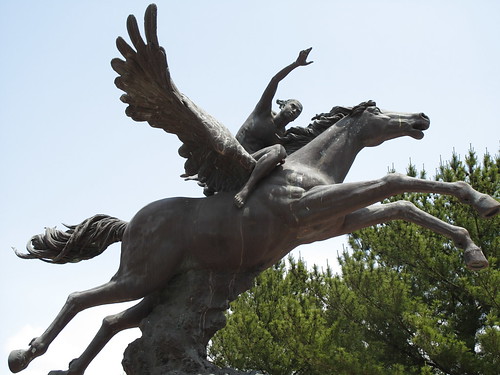
STATUARY. The representation of BELLEROFONTE in open-air statuary should be easy enough to trace.
1767. Giuseppe Mysliveček, "Il Bellerofonte"
-- su libretto di Giuseppe Bonecchi. Teatro San Carlo di Napoli. Personaggi: Argene, soprano, Ariobate, tenore, Atamante, tenore, Bellerofonte, TENORE, Briseide, mezzosoprano, Diomede, tenore, Minerva, mimo.
BRUTO:

STATUARY. PORTRAIT OF BRUTO FOR open-air statuary should be easy enough to trace. Marco Giunio Bruto Cepione (latino: Marcus Iunius Brutus Caepio; Roma, 85 a.C. – Filippi, 23 ottobre 42 a.C.) è stato un politico romano, senatore della tarda Repubblica romana e uno degli assassini di Giulio Cesare. Vide Giulio Cesare.
1790. Francesco Bianchi, "La morte di Giulio Cesare"
-- dramma per musica, 12 luglio 1797, Teatro alla Fenice, Venezia, dramma serio per musica in 2 atti e 29 scene, su libretto di Gaetano Sertor.
CASSANDRO
FIG. The representation in open-air statuary should be easy to trace. Olimpia
was the daughter of Statira and Alexander, who plans to marry Cassander but then
discovers that he killed her father. (Story by Voltaire)
Spontini, G.L.P. 1819 Olimpia e Cassandro.
CASTORE E POLLUCE

STATUARIA: ♂♂ , nudi, Piazza del Quirinale. A very important group.
CASTORE E POLLUCE ♂♂ , nudi oggi, Prado, Madrid.
MUSICA: Castore e Polluce, opera seria, Francesco Bianchi, libretto Carlo Innocenzo Frugoni. The opera contains all the elements that had been purged from Italian serious opera before the turn of the century: gods appearing in machines, miraculous scene changes, arias without exit, much use of chorus, and an infernal scene in the underworld with dancing. Teatro della Pergola in Florence on 10 January 1779. Personaggi: Polluce, Castore (Luigi Marchesi), Telaira, Febe (Nancy Storace), Giove,
Mercurio. The immortal Polluce wishes to change places with his mortal (and dead) brother, Castore, so that the latter can rejoin his lover Telaira. This causes many complications, not least with Telaira's sister (and Polluce's lover) Febe. Giove ultimately reunites Polluce, Castore and Telaira in heaven.
CECINA PETO suicida ♂ (c/ARRIA), Palazzo Altemps, Roma.
CEFALO:

STATUARY The representation of CEFALO in open-air statuary is easy enough to trace.
1600. G. Caccini, Il rapimento di Cefalo.
CINCINNATO ♂ , nudo, oggi: Louvre.
COMMODO ♂, nudo, come Ercole, galleria Chiaramonti, Vaticano.
DAFNI -- the shepherd -- see PAN e DAFNI.
EDIPO, POLINICE:
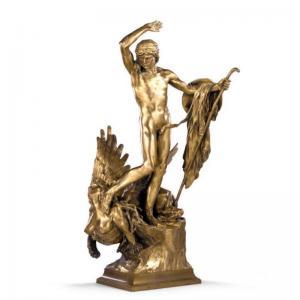
STATUARY: The representation of EDIPO in open-air Italian statuary is not difficult to trace. The above shows a 'nudo eroico', as it should.
-- ed Antigona, daughter of Edipo, Antigona represents sisterly fidelity. (Text by Sophocles) Theban hero who guessed the riddle of the Sphynx and so became King of Thebes. (Texts based on Oedipus at Colonnus (c.401 B.C.) and Oedipus Tyrannus (c. 430 B.C.). by Sophocles

STATUARY: The representation of EDIPO in open-air Italian statuary is not difficult to trace. The above shows a 'nudo eroico', as it should.
-- ed Antigona, daughter of Edipo, Antigona represents sisterly fidelity. (Text by Sophocles) Theban hero who guessed the riddle of the Sphynx and so became King of Thebes. (Texts based on Oedipus at Colonnus (c.401 B.C.) and Oedipus Tyrannus (c. 430 B.C.). by Sophocles
1676. Legrenzi, Eteocle e Polinice. Personaggi: Ombre
d'Edipo.
EGISTO:

STATUARY: Egisto. The representation of Egisto, along with Agammenon or Oreste, in open-air Italian statuary is easy to trace.

STATUARY: Egisto. The representation of Egisto, along with Agammenon or Oreste, in open-air Italian statuary is easy to trace.
1968. Antoniou, T. 1968 Agamennone e Clytemnestra
1980. Eaton, J. 1980 Agamennone e Clytemnestra
ENDIMIONE:

FIG. The representation of ENDIMIONE in open-air (or semi-open air, as per above, CANOVA) statuary in Italy is easy enough to trace.
1626. Giacinto Cornacchioli, "Endimione"
-- su libretto di G. F. Parisani. Roma, Personaggi: Endimione, Diana, Pane, Amore.
-- su libretto di G. F. Parisani. Roma, Personaggi: Endimione, Diana, Pane, Amore.
ENEA:

STATUARY: BERNINI. The oldest open-air statue of ENEA should be easy enough to trace.
1638. G. Marco Scacchi, L'Enea in Italia
-- dramma musicale. Vi furono quattro scenari: la veduta della città, la radura nel bosco, un porto marino e il palazzo di Didone. Furono effettuati quattro cambi di scena totali e qualche cambiamento del solo fondale che mostrava l’interno di una sala del palazzo della regina cartaginese. Le macchine di sollevamento più volte innalzarono sopra le scene le figure degli dei: Mercurio, Giunone, Venere, Aurora e Giove. Un punto saliente di particolare attrattiva fu anche una tempesta. Spiccano per originalità due scene. Nel prologo una nuvola si apriva lentamente mostrando la veduta panoramica di Cracovia con la storica scena dell’omaggio della Prussia alla Polonia, uno dei pochi motivi “polacchi” del teatro dell’epoca di Ladislao IV. L’idea stessa di presentare una veduta nel prologo o in una delle prime scene della rappresentazione teatrale compariva molto spesso nel teatro italiano, per esempio nei progetti di Bernardo Buontalenti e Giulio Parigi.
ERCOLE:
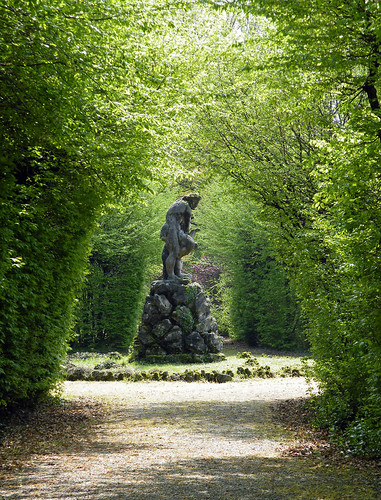
STATUARIA. While the most famous representation is the "ERCOLE FARNESE", the open-air statuary of Ercole is easy enough to trace.
ERCOLE ♂ bronzeo del foro Boario, tempio d'Ercole, Palazzo dei Conservatori.
ERCOLE ♂ farnesino, Napoli, gia Villa Farnese.
ERCOLE symplegma ♂♂ E. scoppia ANTEO, palazzo Pitt, Firenze.
ERCOLE -- moderne: BANDINELLI ("Ercole e Caco", FIRENZE).
ERCOLE ♂ torso, Vaticano -- ascribed to Ercole on account of the lion skin. But authors disagree and some think the torso belongs to IACACE and he meditates suicide. MUSICA: 1605. Jacopo Peri, Il Natale d’Ercole
--
Firenze. Buonarroti , Michelangelo , 1568 - 1646. Favola
rappresentata al serenissimo Signor Don Alfonso III d' Este Principe Duca di
Modena, e all'eccellentissimo Signor Don Luigi d'Este suo fratello, nella venuta
loro a Firenze, da Madama serenissima di Toscana, nel palazzo del
eccellentissimo Signor D. Antonio Medici.
1627. Jacopo Peri, Ercole ed Iole, su libretto di Andrea Salvatore, Firenze
After APOLLO, perhaps the most represented figure. In a way, he should be
preferred to APOLLO in that ERCOLE is human, and not divine. Some important
representations below. 1627. Jacopo Peri, Ercole ed Iole, su libretto di Andrea Salvatore, Firenze
ETTORE
STATUARIA: ♂, nudo eroico, discobolo di Nettuno, Villa Borghese, oggi: Louvre. Heskell/Penny trace the earliest statue: the ETTORE-discobolo, with sword and shield. The earliest representation of ETTORE in open-air statuary should be easy enough to trace.
MUSICA:
1711. F G Bertoni, Ettore ed Andromaca
1711. F G Bertoni, Ettore ed Andromaca
FAUNO.
FAUNO -- one should consider whether a 'fauno' represents a human male type. Centaurs and satyrs don't. Below, some representations of 'fauni', though.
FAUNO ♂ Barberini, villa Barberini, oggi Monaco, glittoteca.
FAUNO ♂ de' Medici, con crotali, Tribuna, Firenze
FAUNO ♂ (di Pompei) danzante, Napoli.
FAUNO ♂ -satiro in riposo, di Lanuvio. Campidoglio.
FAUNO ♂ c/capretto, Santa Maria Vollicella, oggi: Prado, Madrid.
FAUNO ♂ con flauto traverso, oggi: Louvre.
FAUNO ♂ in rosso antico, Campidoglio.
FETONTE:
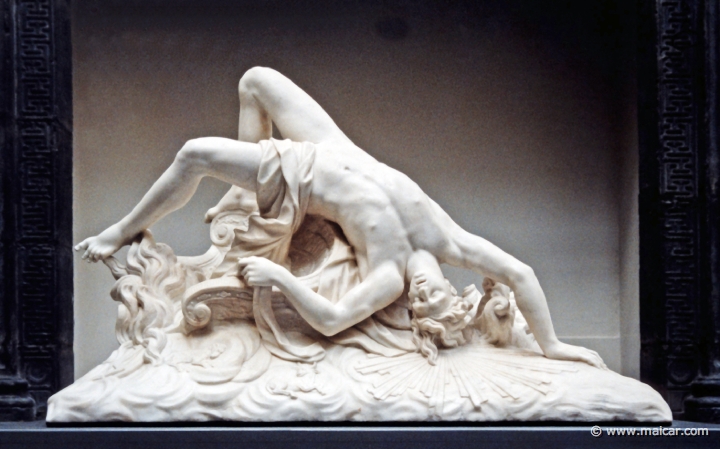
STATUARY. The representation of FETONTE in open-air Italian statuary should be easy enough to trace.
1683. Gian Battista Lulli, Fetonte. Quinault.
1753. .Nicolò Jommelli, Fetonte.
FILEMONE:
FIG. The earliest representation of FILEMONE in open-air Italian statuary should be easy enough to trace.
1703. MATHO, Filemone e Bauci.
GANIMEDE:

STATUARY. The earliest representation seems to be a statue in the Museo delle Terme di Diocleziano, Roma. There are BOOKS written on the earliest open-air statuary in Italy of GANIMEDE and the eagle. The earliest should be easy enough to trace.
1623. Cesare Abelli, Il ratto di Ganimede da Giove, Bologna.
GIACINTO ♂
STATUARIA: discobolo Lancellotti, Villa alombara, Palazzo Massimo, Roma.
MUSICA: 1767. Mozart. "Apollo e Giacinto".
GIASONE:
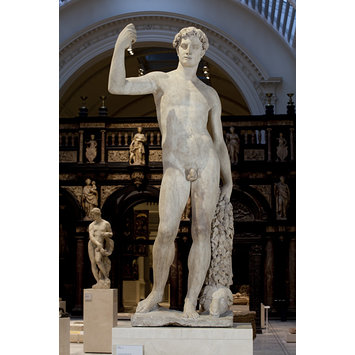
STATUARY. The earliest representation of GIASONE in open-air
statuary in Italy should be easy enough to trace.
1649. P. F. Cavalli, Giasone
1662. KERRL, Medea vendicativa.
1671. F Acciajoli, Il Novello Giasone
1662. KERRL, Medea vendicativa.
1671. F Acciajoli, Il Novello Giasone
GIOVE:
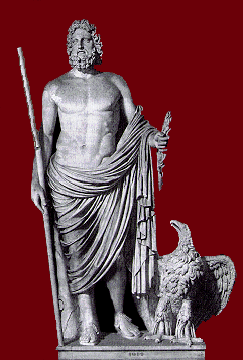
Fig. TESTA di Giove. ALTEMPS.
MUSICAL
Handel, SEMELE. .
1940. R. Strauss, L'amori di Danae.
1743. Handel, Semele. (Thanks to R. H. for the reminder!)
GIULIO CESARE:
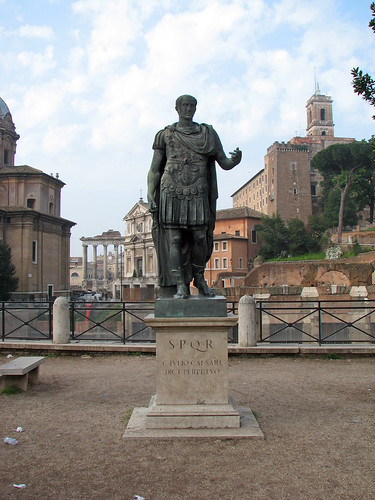
STATUARIA: The earliest representation of GIULIO CESARE in open-air statuary was a portrait.
-- v. Bruto.
Handel, Giulio Cesare in Egitto.
"La morte di Giulio Cesare".
IDOLINO ♂ di Pesaro, palazzo della Crocetta, Firenze.
IDOMENEO:
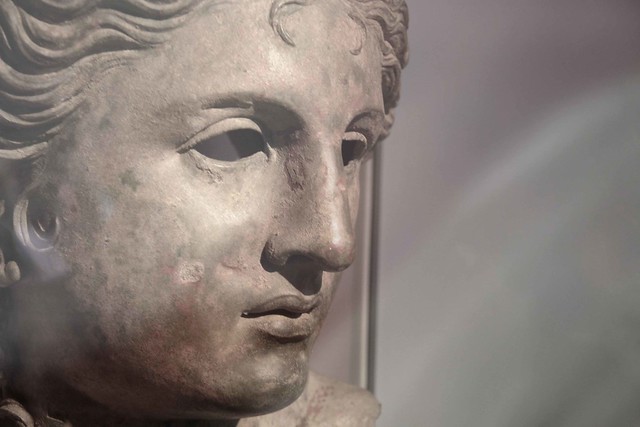
STATUARY. The representationof IDOMENEO in open-air Italian statuary should be easy enough to trace (or not).
1712. Campra, A. Idomeneo. R. Petrilli, Idomeneo.
IPPOLITO:

STATUARIA:The earliest representation of IPPOLITO in Italian open-air statuary should be easy enough to trace.
MUSICA:
1733. Rameau, J. P. Ippolito ed Aricia.
LAOCOONTE ♂♂ e il suo figlio (older son later addition), cortile del Belvedere, Vaticano
LOTTATORI symplegma ♂♂, Tribuna, Uffizi.
MARC'ANTONIO:

STATUARIA:The earliest representation of MARC'ANTONIO in
open-air Italian statuary should be easy to trace.
-- Marcus Antonius.
MUSICA:
1725. Hasse, "Marco Antonio e Cleopatra".
-- Marcus Antonius.
MUSICA:
1725. Hasse, "Marco Antonio e Cleopatra".
MARFORIO ♂, Campidoglio.
MARSIA ♂ (da un gruppo figurante anche Apollo e schiavo) Uffizi, Firenze.
MARTE:

STATUARY. ♂ in riposo, detto Ludovisi, palazzo Altemps, Roma. The earliest representation of MARTE is lited in Haskell/Penny, "Taste and the antique". The representation of MARTE in open-air statuary should be easy to trace, as far as the earliest sources are concerned. Famous examples are Villa Adriana, and the MARTE LUDOVISI.
MUSICA:
1784. Gaetano Giulio Gerolamo Pugnani, "Adone e Venere"
MARZIO -- NUDO DELLA SPINA ♂, Palazzo dei Conservatori.
MELEAGRO:
_-_n._129_-_Meleagro,_Vaticano,_Roma.jpg)
STATUARIA: ♂ Vaticano The earliest representation of MELEAGRO is listed by Haskell/Penny, "Taste and the antique". The representation of MELEAGRO in open-air statuary should be easy to trace. The MELEAGRO del Belvedere being a very famous example.
MUSICA:
1797. Zingarelli, "Meleagro".
MERCURIO ♂, marmo, Uffizi
MERCURIO ♂ bronzeo in riposo, Napoli
MIRMILLONE ♂ morente della Villa Ludovisi, Campidoglio.
NARCISO:

STATUARIA: ♂ di Pompei, Napoli. Moderne: CELLINI.The oldest representation of NARCISO is listed in Haskell/Penny, "Taste and the Antique: a bronze of Narciso found in Pompei. The representation of Narciso in open-air statuary should be easy to trace. There's DONATELLO.
MUSICA:
1638. Marco Scacchi, Narciso transformato:
-- favola pastorale recitata in musica su libretto di Puccitelli.
NERONE--

STATUARIA: The representation of NERONE in the earliest Italian open-air statuary should be easy to trace.
1643. Claudio Monteverdi, L'incoronazione di Poppe da Nerone: dramma per musica in un prologo e tre atti, su libretto di Gian Francesco Busenello, Carnevale, Teatro Santi Giovanni e Paolo, Venezia.
1924. Arrigo Boito, Nerone: tragedia in quattro atti e due quadri. Teatro alla Scala, Milano.
1935. P. Mascagni, Nerone
-- dramma lirico in tre atti, su libretto di Giovanni Targioni-Tozzetti, tratto della novella di Pietro Cossa, Teatro alla Scala, Milano.
NETTUNO:

FIG. The representation of NETTUNO in open-air statuary is easy to trace. Operatic examples are not. vide TESEO.
NILO ♂ braccio nuovo, Vaticano
NIOBIDI ♂ Uffizi, Firenze.
ORESTE:
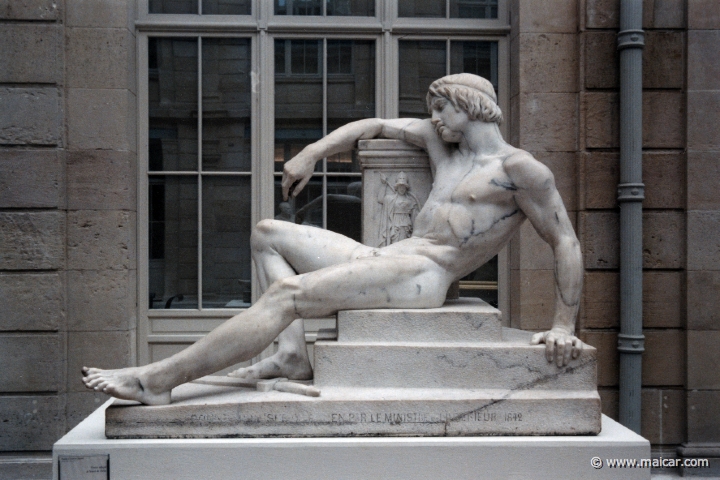
STATUARIA: The earliest representation of ORESTE in open-air statuary should be easy enough to trace. There is the famous "ORESTE ED ELETTRA" in the Campidoglio, a famous example.
MUSICA:
1685. G. Perti, Oreste in Argo: dramma per musica, su libretto di Giacomo Bergamori.
1685. G. Perti, Oreste in Argo: dramma per musica, su libretto di Giacomo Bergamori.
ORFEO:

STATUARY. The earliest representation of ORFEO in Italian open-air statuary should be easy to trace. .
1600. G. Caccini and J. Peri, Orfeo ed Euridice, Firenze.
ORIONE:

STATUARIA: The representation of ORIONE in Italian open-air statuary should
be easy to trace.
MUSICA:
1642. Francesco Melosio, "L'Orione", Teatro San Moisè, Venezia.
1642. Francesco Melosio, "L'Orione", Teatro San Moisè, Venezia.
1652, Francesco Cavalli, "L'Orione" -- dramma per
musica in un prologo e tre atti, su libretto (1642) di Francesco Melosio, Teatro
regio, Milano -- June, to celebrate the election of Ferdinand IV as King of the
Romans. The libretto had originally been written for the Teatro San Moisè,
Venice, in 1642. Personaggi: Orione, Diana, Aurora, Castore, Ercole, Taumanti,
Filotero, Vulcano, Bronte, Sterope, Apollo, Venere, Cupido, Giove, Titone,
Nettuno, Caronte, Pluto, Vecchia, Una ninfa dell'Aurora, Due ninfi di
Diana.
PANE:
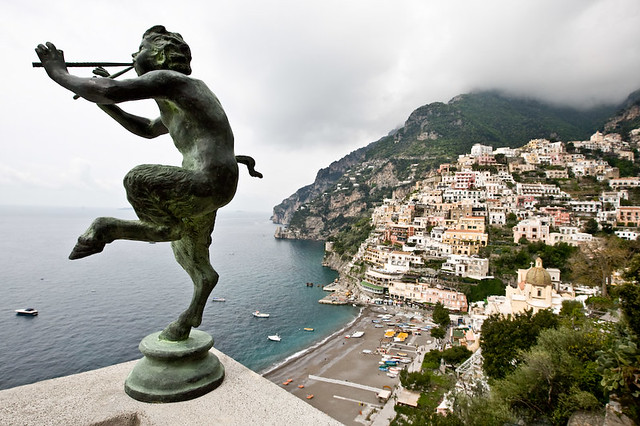
FIG. The representation of PANE in open-air Italian statuary
should be easy to trace, as far as the earliest sources are concerned. A famous
example is above.
1626. Cornacchioli, "Pane", Roma.
-- Personaggi: AMORE / soprano, DIANA / contralto, PANE satiro / basso, ENDIMIONE / tenore
-- Personaggi: AMORE / soprano, DIANA / contralto, PANE satiro / basso, ENDIMIONE / tenore
E DAFNI faunus faunus ♂♂, palazzo Massimo, Roma
PARIDE:
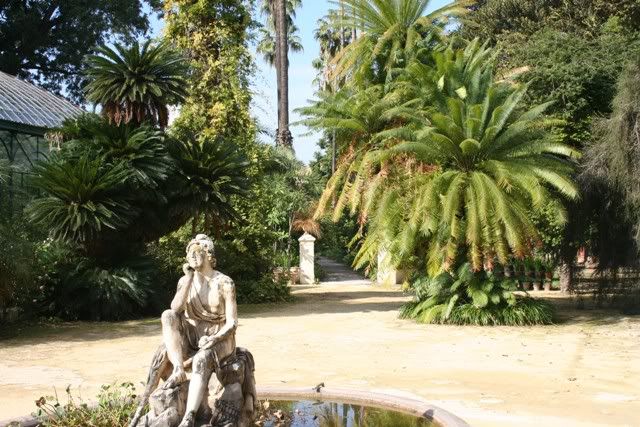
STATUARY. The representation of PARIDE in open-air Italian statuary should be easy enough to trace, as far as the earliest examples are concerned.
-- ed Elena, daughter of Zeus and Leda, wife of Meneleus (King of Sparta). Eloped with Paris, thus
bringing about the destruction of Troy. (see Homer’s Illiad). vide Achille.
1864. J. Offenbach, J. La bella Elena. Opera
Buffa
PASQUINO ♂♂ e PATROCLO-Menelao, piazza Navona, Roma, loggia dei lanzi,
palazzo Pitti, Firenze
PATROCLO:
STATUARIA: The earliest representation of PATROCLO in open-air Italian
statuary should be easy enough to trace. The above, from FIRENZE -- indeed a
restoration out of the so-called "PASQUINO" group. There are two copies in
FIRENZE, the above as per the "Loggia dei Lanzi", the other in Palazzo
Pitti.
PATROCLO -- vide PASQUINO. PATROCLO E MENELAO, Loggia dei Lanzi.
PATROCLO E MENELAO, Palazzo Pitti.
MUSICA:
1819. Nasolini, "La morte di Patroclo": dramma serio da rappresentaris nel teatro Carcano l'estate.
PELOPE:1819. Nasolini, "La morte di Patroclo": dramma serio da rappresentaris nel teatro Carcano l'estate.

FIG. The earliest representation of PELOPE in open-air Italian statuary should be easy enough to trace.
1755. N. Jommelli, "Pelope" --
opera seria.
PENTEO:
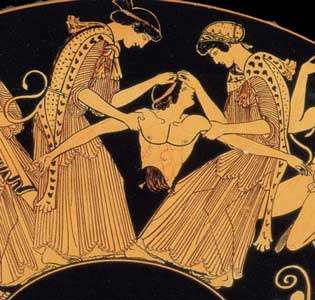
FIG. The earliest representation of PENTEO in Italian open-air statuary
should be easy enough to trace.-- vide Bacco.
1971. Franceco Valdrambrini, "Penteo" su libretto
di Virgilio Piicher, tratto d'Euripide.
PERSEO:

STATUARIA: Moderne: CELLINI. The earliest representation of PERSEO in open-air statuary should be easy enough to trace. The famous examples by CELLINI and CANOVA should be listed.
MUSICA: 1610. Girolamo Giacobbi, Perseo ed Andromeda:
-- tragedia in cinque atti, su
libretto di Campeggi, Bologna, carn. feb
PILADE ED ORESTE:

PLUTO:
FIG. The earliest representation of PLUTO in open-air Italian statuary should be easy enough to trace.
POMPEO ♂ POMPEO, palazzo Spada, Roma.PILADE ED ORESTE:

STATUARY. The earliest representation of the 'gruppo scultorico', "ORESTE E
PILADE", should be easy enough to trace. This group above has also been ascribed
to CASTORE E POLLUCE.
MUSICA: "PILADE ED ORESTE".
MUSICA: "PILADE ED ORESTE".
PIRAMO:
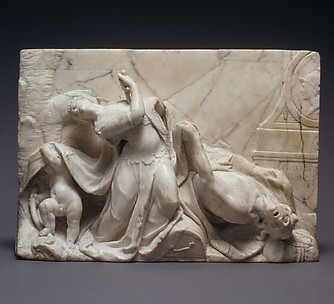
STATUARY: The earliest representation of PIRAMO in Italian opean-air statuary should be easy enough to trace

STATUARY: The earliest representation of PIRAMO in Italian opean-air statuary should be easy enough to trace
1694. J. S. Kusser, Piramo e Tisbe -- tratto
d'Ovidio, Met.
PLUTO:
FIG. The earliest representation of PLUTO in open-air Italian statuary should be easy enough to trace.
1965. Nikos Mamangakis, Plutos.
PROMETEO
STATUARY: The earliest representation of PROMETEO in open-air statuary shoud be easy enough to trace.
1951. L. Cortese, Prometeo
ROMOLO:


STATUARY: LUPA, Campidoglio. FIRENZE: Ratto delle sabine. Needless to say, the earliest representation of Romolo and Remo predate them!
-- e Romolo
1645. Cavalli, "Il Romolo e l'Remo pastori"
-- dramma per musica in un prologo e tre atti, su libretto di Giulio Strozzi, Teatri Santi Giovanni e Paolo, Venezia.
1680. AGOSTINI, Il ratto delle Sabine -- libretto di Giacomo Francesco Busani (Venezia, Teatro San Giovanni Grisostomo, 12/1680) Drama per Musica Nell'augusto Teatro Grimani di S. Gio. Grisostomo l'anno 1680. del Bussani. Consacrato All'altezza Serenissma di Ranuccio Farnese .. /(musica ... del Sig. Cavalier Pietro Simone Augustini Maestro di Cappella Dell'a.s. di Parma ...) ;
PERSONAGGI
Giuseppe Maria Donati : Romolo.
SENECA:

STATUARIA: Heskell/Penny, "Taste and the antique".
MUSICA: Monteverdi, L'incoronazione di POPPEA.
SILLA -- Lucio Cornelio Silla
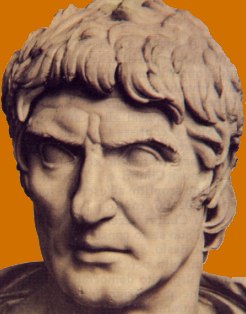
STATUARY: The earliest representation of this in open-air Roman statuary
should be a portrait.
1775. Mozart
SILENO ♂♂ SILENO e Bacco, oggi: Louvre.
TELEMACO:

STATUARY: The earliest representation of TELEMACO in open-air statuary should be easy enough to trace.
1641. C. Monteverdi, Il ritorno d'Ulisse in patria. Telemaco (tenore) in Atto 2 (I, II, III, XI), Atto 3 (V, IX, X).
TESEO:

STATUARY. The earliest representation of this in open-air statuary should be easy to trace. Cfr. CANOVA.
MUSICA: 1608. C. Monteverdi, L'Arianna abbandonata da Teseo nell'isola di Nasso. Mantova. Aria: "Lasciatemi morire."

STATUARY. The earliest representation of this in open-air statuary should be easy to trace. Cfr. CANOVA.
MUSICA: 1608. C. Monteverdi, L'Arianna abbandonata da Teseo nell'isola di Nasso. Mantova. Aria: "Lasciatemi morire."
TEVERE ♂ oggi: Louvre.
TORO FARNESINO taurus taurus ♂♀ TORO FARNESINO, Napoli.
TROILO:

STATUARY: The earliest representation of TROILO in Italian open-air statuary should be easy enough to trace.
MUSICA:
1951. W. Zillig, Troilo e Cressida.
1954. W. Walton, Troilo e Cressida.

STATUARY: The earliest representation of TROILO in Italian open-air statuary should be easy enough to trace.
MUSICA:
1951. W. Zillig, Troilo e Cressida.
1954. W. Walton, Troilo e Cressida.
ULISSE

Moderne.
FIG. The earliest representation of this in open-air Italian statuary should be easy enough to trace.
1581. B. Beaujoyeulx, Le Ballet comique de la
royne
1616. Circe abbandonata da Ulisse. Sabadini, B. Circe abbandonata da
Ulisse.
ZEFFIRO:

STATUARIA:
The earliest representation of ZEFFIRO in Italian open-air statuary should be easy enough to trace.
MUSICA: 1628. Gagliano, Il Zeffiro. Firenze






No comments:
Post a Comment